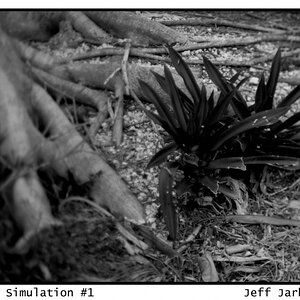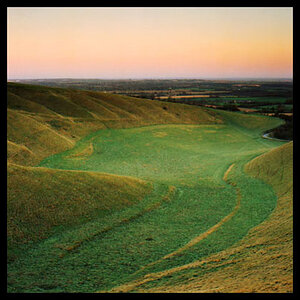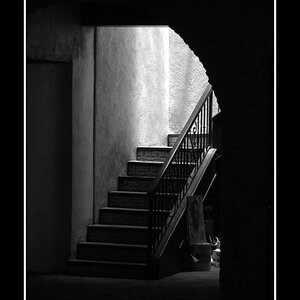In practical terms the difference in the circle of confusion between a FF Canon at 0.030mm and a 1.6 crop sensor camera at 0.19mm is slight. Do the math.
Hyperfocal distance, near distance of acceptable sharpness, and far distance of acceptable sharpness are calculated using the following equations (from Greenleaf, Allen R., Photographic Optics, The MacMillan Company, New York, 1950, pp. 25-27):
Hyperfocal distance:

Near distance of acceptable sharpness:

Far distance of acceptable sharpness:

where:
H
is the hyperfocal distance, mm
f
is the lens focal length, mm
s
is the focus distance
Dn
is the near distance for acceptable sharpness
Df
is the far distance for acceptable sharpness
N
is the f-number
c
is the circle of confusion, mm
f-number is calculated by the definition N = 2i/2 , where i = 1, 2, 3,... for f/1.4, f/2, f/2.8,...
Calculations using these equations must use consistent units. When focal length and circle of confusion have units of millimeters, the calculated hyperfocal distance will have units of millimeters. To convert to feet, divide H by 304.8. To convert to meters, divide H by 1000.
Hyperfocal distance, near distance of acceptable sharpness, and far distance of acceptable sharpness are calculated using the following equations (from Greenleaf, Allen R., Photographic Optics, The MacMillan Company, New York, 1950, pp. 25-27):
Hyperfocal distance:

Near distance of acceptable sharpness:

Far distance of acceptable sharpness:

where:
H
is the hyperfocal distance, mm
f
is the lens focal length, mm
s
is the focus distance
Dn
is the near distance for acceptable sharpness
Df
is the far distance for acceptable sharpness
N
is the f-number
c
is the circle of confusion, mm
f-number is calculated by the definition N = 2i/2 , where i = 1, 2, 3,... for f/1.4, f/2, f/2.8,...
Calculations using these equations must use consistent units. When focal length and circle of confusion have units of millimeters, the calculated hyperfocal distance will have units of millimeters. To convert to feet, divide H by 304.8. To convert to meters, divide H by 1000.









![[No title]](/data/xfmg/thumbnail/34/34344-0b42e0e92ad436e6710a1b9c4585d6df.jpg?1619736379)



